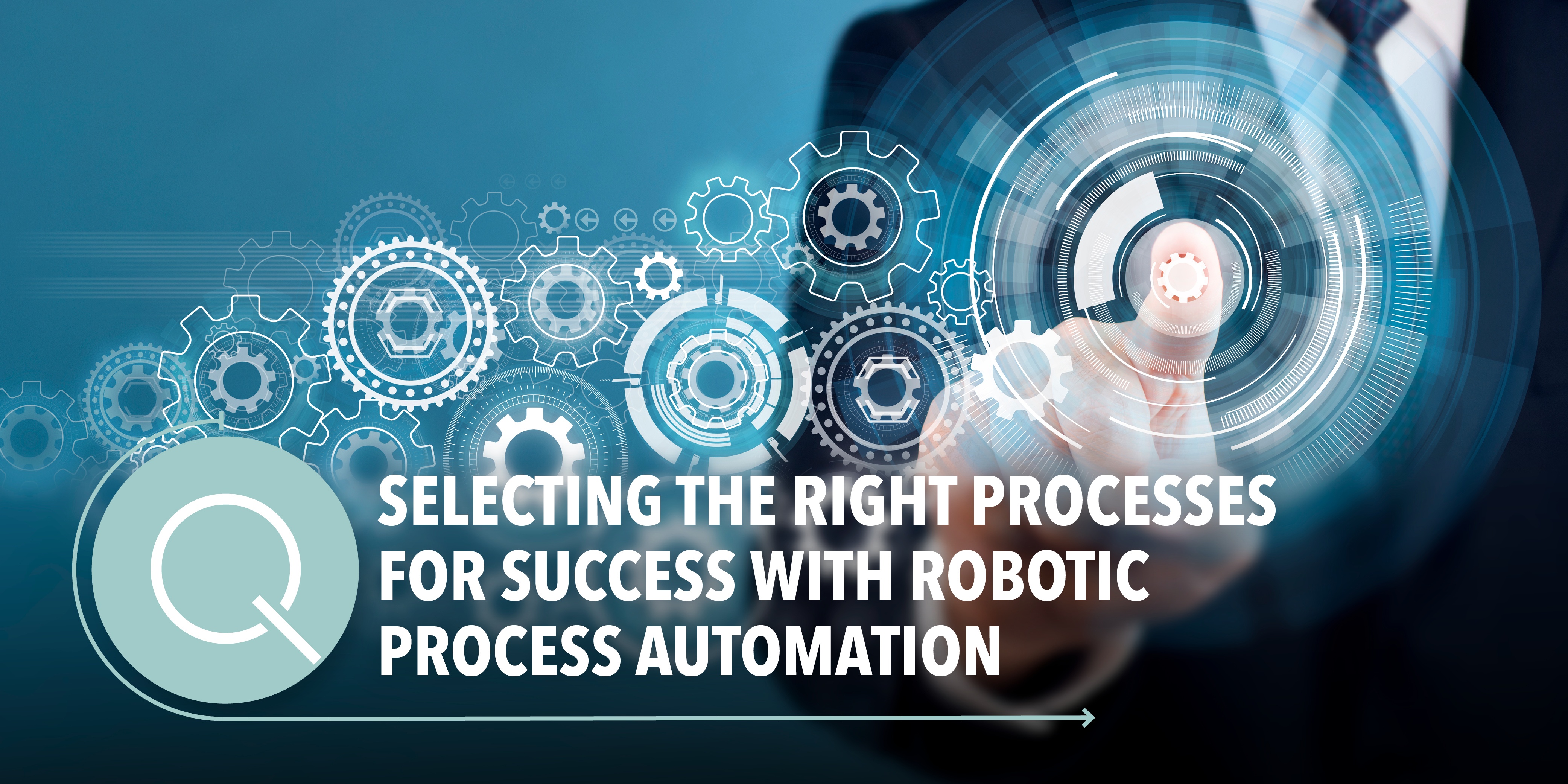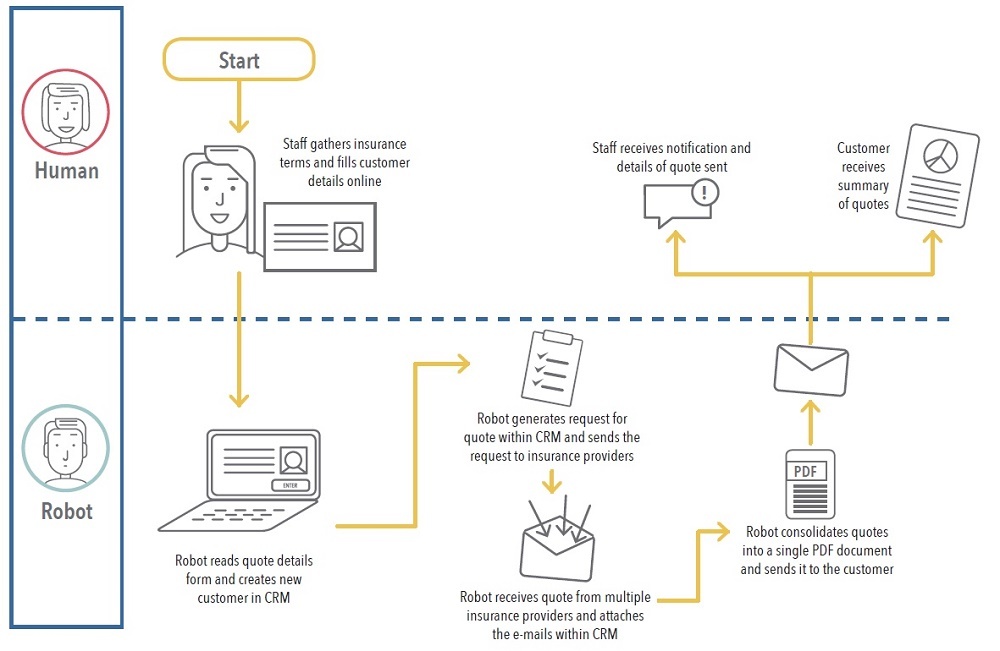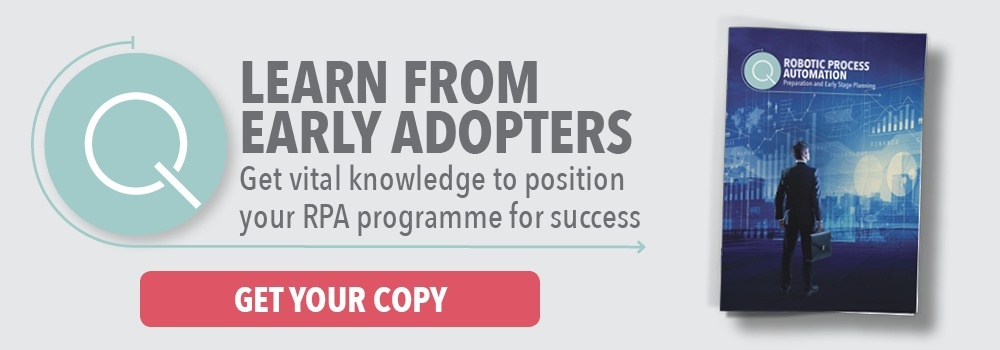
Selecting the appropriate processes for Robotic Process Automation (RPA) is critical to the success of an RPA programme. Last week we discussed the most common myths that exist regarding Robotic Process Automation (RPA). This week we discuss the second topic from our latest paper, Robotic Process Automation: Early Stage Preparation and Planning, how to identify processes for automation within your organisation.
Process selection is one of the most significant contributors to programme launch risks as identified by Professor Leslie Willcocks (London School of Economics).
When the wrong process is selected, organisations risk failing to achieve automation, realise benefits or over-extending investment requirements.
The question then is how organisations identify processes in a manner which mitigates this risk. The three things we recommend organisations consider, discussed fully alongside other content including RPA risks and barriers to adoption in our latest paper, are process selection criteria, process complexity and end-to-end automation.
1.0 Set Strong Process Selection Criteria
The primary recommendation is that organisations develop a clear set of criteria that will be used to screen, assess and priotise the suitability of processes for automation.
As part of an established RPA programme, these criteria would form an integral aspect of pipeline management. In the early-stages of RPA assessment and programme planning, an initial set of criteria can help an organisation gain an understanding of where good candidates may exist within their business.
The opportunity is to create two levels of evaluation criteria. The first is a generic set of standards which determines the general suitability of a process for automation while the second is based on the unique alignment between target benefits and organisational strategy. It is possible to combine these criteria using weighted scoring to determine an automation score, a numerical measurement to screen processes in or out based on a minimum score and the ability to create a ranking system supporting prioritisation of processes for automation in the mid-term.

Generic criteria include attributes such as being rule-based, having high-levels of repetition and repeatability, and having a high transaction volume. These are typical examples of rules that can be used. The internet is awash with information in this area and alternatives can easily be researched.
We strongly advocate the need to align target benefits with both overarching organisational strategy and strategic drivers. If this is accepted, then the second level of criteria is a specific set of measures that reflect and prioritise processes based on an organisation’s unique requirements. For example, organisations focusing on increasing compliance or reducing risk would be prioritising processes with high compliance requirements or with known or assumed rates of processing errors. Alternatively, organisations targeting customer service improvements would be prioritising service delivery processes or processes with a known impact the customer experience and organisations seeking to reduce costs would be prioritising processes which require intensive human resource and have the potential to achieve a high time saving through automation.
2.0 Understand Process Complexity
An important determinant in process selection and another factor that should be considered in selection criteria is process complexity.
Our experience is that the two most influential determinants of complexity are the number of target systems or applications a process engages with and the number of individual steps in a process, at a granular level. For example, launch a web browser and navigate to a shared folder on the intranet.
Incremental increases to both attributes directly influence the complexity of the process, and ultimately the level of risk faced, and the investment required to automate a process.
While process complexity can be simplified by reducing the number of target systems and the number of individual process steps, there is a range of additional parameters which can occur in any combination and ultimately increase the level of risk present or resource investment required to automate a process.

Additional variables include factors such as the presence of relatively higher levels of business rules, logic or validation, RPA being new to the business or the absence of process maturity before automation can all have varying degrees of impact on process automation.
Additional Variables Affecting the Complexity of Process Automation
A process has high business logic and validation
The presence of relatively higher levels of business rules, process logic or validation requirements for a given process. This scenario commonly arises in processes with high regulatory and compliance requirements such as finance reconciliations or tax returns.
RPA is new to the business
At the point Robotic Process Automation (RPA) is new to an organisation all participants are undertaking a learning curve, determining the inputs and focus areas that are critical and finding the ‘path of least resistance’. This effect is temporary but will have a diminishing negative impact as the business develops in-house capability and knowledge.
The business process has not been reviewed or refined before automation
It is not so much the level of process maturity, for example, the presence of documentation that will prohibit automation as much as the correctness or ‘currentness’ of a process. Often embedded processes are completed based on historical precedent, which can come to light in the action of achieving automation. The variable therefor is the degree to which the business wishes to change the process during the act of automation.
Compatibility of system architecture with RPA technology
RPA technologies are promoted as agnostic and with the ability to integrate to any system. While this is ultimately true, it is acknowledged that the architecture of systems can vary greatly, and it is fair to say that different RPA technologies can be less compatible with the architecture of some systems, for example, Citrix hosted applications. Compatibility is not a significant risk that will prevent automation but is a factor that can influence the complexity of process automation, and one organisations should be aware of.
3.0 End-To-End Process Automation
A crucial factor to note is that organisations can choose to automate only parts or portions of a process.

Referring to our commentary in RPA myths, there are claims that 92-94% of end-to-end processes require human involvement, which would typically be in the form of decision making, the provision of additional information or relationship management with customers.
In processes suitable for automation, we would expect to see human involvements cluster at specific points or stages.
An overall process may interact with 15 systems which would begin to create complexity in automation; however, a defined portion of a process may only interact with three.
If an organisation starts to take the approach of dividing processes into sub-process, complexity can be reduced. Equally an overall process may have high occurrences of business variances or exceptions which may be primarily contained to one part of the process.
Considering all these factors, not only is it a likely outcome that organisations will automate parts of processes, but the ability of an organisation to break processes into segments will potentially work to the advantage of an organisation, supporting efficiency and reducing risk.
The ultimate opportunity is not necessarily to automate processes end-to-end but to better understand and streamline how processes transition between the human and virtual work-forces.

In summary, the recommendation for identifying processes suitable for automation is to start with a set of generic criteria designed to determine general suitability for automation before applying an additional set of organisation specific standards which ensure alignment between planned benefits and organisational strategic drivers.
Other considerations which will form part of the identification process should be process complexity determined by the number of target systems and applications and the occurrences of business variances and exceptions.
An opportunity to mitigate some of the factors which may make a process undesirable for automation is to assess processes in segments or parts of their entire state.
Lastly, it is unlikely that an organisation will achieve full end-to-end process automation mainly based on human involvement in process execution. The opportunity, therefore, is not the pursuit of automation to this level, but the understanding of how to seamlessly integrate the human and virtual workforce and the transitioning of the processes between each workforce.



